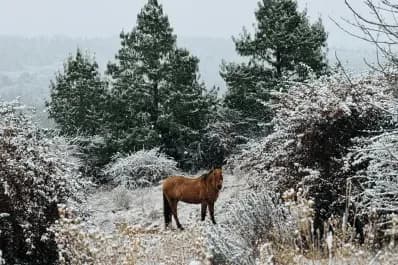The Pulse of Córdoba: Decoding Its Temperate Yet Unpredictable Temperatures
Unravel Cordoba's unique temperature story. Explore its temperate 'pampeano' climate, how global shifts impact forecasts, and why understanding local weather is vital for all.
Córdoba's Distinctive Climatic Persona
Nestled in the heart of , boasts a unique climatic identity that sets it apart. Despite its latitude, the city's climate is best described as temperate and moderate, a characteristic deeply rooted in its 'pampeano' nature. This classification implies a climate where the four seasons are distinctly felt, yet without the harsh extremes often associated with other regions. Winters, for instance, are notably mild, offering a gentle reprieve rather than an icy grip. Summers, conversely, bring with them a more humid character, marked by days of high temperatures that often give way to refreshingly cool nights. It's during these warmer months that Córdoba experiences its share of dramatic weather, including electrical storms and occasional hailstorms, painting a vivid picture of its dynamic atmospheric personality. While easterly and westerly winds tend to be fleeting and of low intensity, spring ushers in a noticeable strengthening of winds from the north and northwest, influencing the city's atmospheric rhythm. Understanding this inherent temperate baseline is the first step in appreciating the complexities of Córdoba's weather patterns.
Decoding the Daily Thermometer: What Drives Córdoba's Weather
Moving from the general to the specific, how do Córdoba's underlying climatic traits translate into its day-to-day weather? The city's temperate 'pampeano' essence means that daily forecasts, while offering immediate utility, are a dynamic interplay of various atmospheric elements. Take, for example, a typical Sunday forecast: a pleasant high of 23 degrees Celsius paired with a cool minimum of 4 degrees, and a mere 1% chance of rain, with low cloud cover. These numbers aren't random; they reflect the ongoing influence of the region's characteristic humidity in summer, the mildness of winter, and the specific wind patterns that dictate local conditions. While the general climate sets the stage, factors like localized humidity, transient wind shifts, and the specific time of year constantly fine-tune the daily experience. Predicting the weather in Córdoba isn't merely about checking a single number; it's about understanding the subtle dance between its inherent climate and the immediate atmospheric variables that shape whether you'll need a light jacket or a full umbrella. This daily variability, though within a temperate range, keeps residents and visitors constantly engaged with the sky above.
Global Shifts, Local Impact: Climate Change and Córdoba's Forecasts
While Córdoba's climate has its inherent rhythms, the global phenomenon of climate change introduces an unpredictable variable, making weather forecasting an increasingly urgent and complex endeavor. The city, much like the rest of , is not immune to these broader shifts. Reports from the highlight a significant trend: 2021, for instance, stood out as one of the warmest years on record for the country. While Patagonia saw some of the most dramatic increases, with temperatures potentially 0.5 to 2 °C above the statistical average since 1961, regions north of parallel 35, including Córdoba, also experienced warmer-than-normal conditions. The data reveals that only three months in 2021 saw slightly below-normal temperatures (January, May, and June); the rest were notably warm, with "extremely warm anomalies" recorded in April and September. This warming trend complicates traditional forecasting models, pushing the boundaries of what's considered 'normal' and underscoring the critical need for constant vigilance. The implications extend beyond mere inconvenience, demanding proactive public policies to mitigate risks from phenomena like extreme heat, droughts, and even uncharacteristic cold snaps.
Beyond the Numbers: The Real-World Stakes of Temperature in Córdoba
Understanding Córdoba's temperature isn't just an academic exercise or a matter of daily convenience; it carries significant real-world implications for public safety, health, and urban planning. The increasing unpredictability, exacerbated by global warming, elevates the stakes considerably. When temperatures soar, for instance, the issues alerts ranging from yellow, indicating potential danger for vulnerable groups like children, the elderly, and those with chronic illnesses, to orange, signaling dangerous phenomena that could impact society, property, and the environment. A red alert, the highest level, warns of "exceptional meteorological phenomena with the potential to cause emergencies or disasters," where temperatures are "very dangerous and can affect all people, even healthy ones." These warnings are not abstract; they prompt crucial public policy responses aimed at reducing risks from heatwaves, but also from other temperature-related extremes like droughts, floods, or severe cold fronts. For residents and authorities alike, monitoring and responding to Córdoba's evolving temperature patterns is a vital, ongoing challenge that directly influences well-being and resilience in the face of a changing climate.
Related Articles

Rosario's Temperamental Skies: Decoding the City's Unique Climate Story

Rosario's Temperamental Skies: Decoding the City's Unique Climate Story

Rosario's Atmospheric Embrace: Navigating the City's Seasonal Charms

Rosario's Atmospheric Embrace: Navigating the City's Seasonal Charms

When Winter Feels Like Summer: Unpacking Tucumán's Climate Paradox

When Winter Feels Like Summer: Unpacking Tucumán's Climate Paradox

From Humid Hues to Winter Whispers: Decoding Rosario's Climate Story
